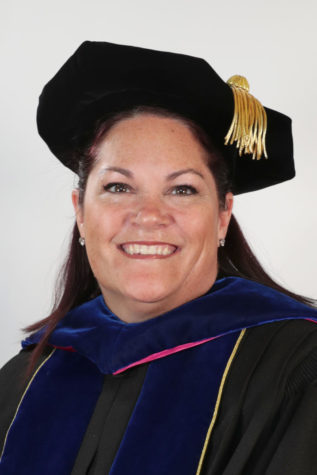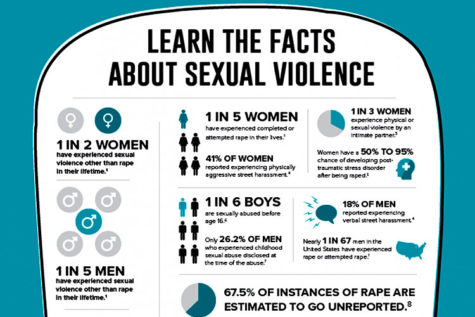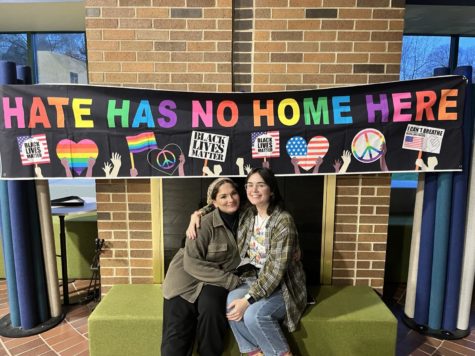Students participate in a re-entry simulation at local jail
December 7, 2022
In recent weeks, several Criminal Justice students from Mercyhurst were able to participate in a first-of-its-kind in this region reentry simulation. Mercyhurst students were able to work alongside incarnated individuals during the simulation. Maria L. Garase, Ph.D., associate professor of Criminal Justice and associate dean of the Ridge College of Intelligence Studies and Applied Sciences gave an interview to share more about the simulation.Q: What is the Albion class and are there any special requirements for students who want to participate?A: “I teach the CRJS 305: Issues in Criminal Justice course, which is an upper-level, elective, criminal justice course that is offered to Criminal Justice majors. The course is limited to ten university students per semester who will take the course along with ten incarcerated students; the course is located in a classroom at State Correctional Institution (SCI) at Albion. SCI Albion is a male, medium-se-curity, state prison located 45 minutes south of campus. Interested students are individually interviewed and screened for the course to make sure they meet all security clearances and requirements per the Pennsylvania Department of Corrections (PA DOC). The class is taught with the Inside-Out Prison Exchange pedagogy. Essentially, university and incarcerated students meet weekly to discuss and reflect on contemporary issues in criminal justice and to work collaboratively on group projects focused on re-entry programming.”Q: Can you provide details about the reentry simulation?A: “The reentry simulation is a program where participants, in this case, staff members from the PA DOC, simulate being a reentrant. A reentrant is a person being released from prison into the community. The “reentrants” are given a “life history” based on their offense as well as their individual needs in the community. They must complete tasks each week, including finding employment, housing and groceries, checking with parole, securing transportation and much more. All of this is done on a tight schedule and budget to mirror the experiences and challenges re-entrants face in the community. Both university and incarcerated students in the Mercyhurst class were paired together to staff stations around the room that represented the grocery store, medical center, identification card facility, bank, court, pawn shop, and more. The “re-entrants” had 15 minutes in each round to complete all assigned tasks. This was the first time that this reentry simulation was done at SCI Albion and had both university and incarcerated students staff the simulation.”Q: Did anything unexpected happen during the stimulation?A: “As part of the simulation, “reentrants” have to complete certain proscribed activities based on the conditions of their supervision, as noted on their “life histories.” Some “re-entrants” resorted to criminal thinking and skirted the rules and were sent to “jail” for violations of their supervision.”Q: What did students think about the stimulation?A: “In the debriefing, the students noted that it was a valuable experience to be able to see first-hand the successes and challenges of reentry. Although the simulation was done in an abbreviated period of time, it was reflective of all of the tasks that individuals coming out of prison are expected to do successfully. A student noted in her reflection that the simulation ‘helped me realize that I want to pursue a career in ex-offend-er reentry services after I leave Mercyhurst in the spring…I believe that all criminal justice students—no matter their desired profession—should be required to participate in this simulation alongside incarcerated classmates in order to open their minds prior to entering their criminal justice careers.’”Q: What did the incarcerated individuals who participated think of the stimulation?A: “In the debriefing, the incarcerated students remarked that this was an extremely valuable experience. One student noted that ‘This simulation was an amazing experience for me, and I am glad and honored that I got to be a part of it. This was definitely something that I’ll never forget!’ Another student stated ‘I learned a lot about myself as well as the reentry process. I hope everyone can experience this process from both ends of the spectrum, instilling a sense of humanity in them when dealing with offenders.’”Q: Is this the first year the class did the simulation? If you did it in the past, how was it?A: “This was the first time that the PA Department of Corrections did the reentry simulation in a prison using incarcerated and university students in the Western District of Pennsylvania. More importantly, this setup allowed for a “role reversal” of sorts, where the incarcerated and university student pairings represented the “social service providers” and the PA DOC staff represented the “reentrants.””Q: Are there any additional comments or information you would like me to include in this article?A: “Dr. John Olszowka, dean of the Ridge College of Intelligence Studies and Applied Sciences was able to observe the reentry simulation at the prison and stated, ‘This was truly an incredible educational experience. It was impressive to watch the interaction between the Mercyhurst students and the Albion students as they led the reentry simulation. Even more inspiring was when the group came together after the simulation as a class to debrief. To see the group share their ideas and experiences as one group free of their designation as Mercy-hurst Laker or inmate was truly moving. Dr. Garase has created a unique educational experience that our students are fortunate to get to participate in.’”Anyone with any additional questions or wants more information on the stimulation can email Garase at mgarase@mer-cyhurst.edu.







